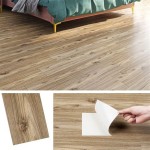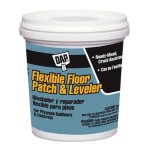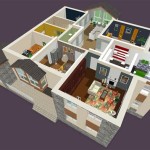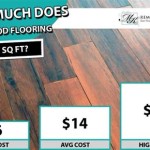Wood Floor Repair in San Antonio: Preserving Beauty and Value
Wood floors are a desirable feature in homes across San Antonio, offering timeless elegance and enduring durability. However, like all structural elements, wood floors are susceptible to damage from various sources, including moisture, impact, wear, and neglect. Addressing these issues promptly and effectively is crucial to maintaining the floor's aesthetic appeal, structural integrity, and overall value. This article provides comprehensive information on recognizing common wood floor problems and understanding the repair options available in San Antonio.
Wood floor repair encompasses a broad range of services, from addressing minor surface imperfections to undertaking extensive structural restorations. The specific techniques and materials employed depend heavily on the type of wood flooring, the extent of the damage, and the underlying cause of the problem. A thorough assessment is always the first step in determining the appropriate course of action. Neglecting necessary repairs can compound the initial damage, leading to more costly and extensive interventions in the future.
Identifying Common Wood Floor Problems
Several factors contribute to the degradation of wood floors. Recognizing these issues early allows for timely intervention and minimizes the potential for long-term damage. Common problems encountered in San Antonio homes include:
Scratches and Abrasions: These are typically superficial marks that affect the finish of the floor. They are often caused by furniture movement, pet claws, or foot traffic with abrasive particles like sand or dirt. While scratches might seem purely cosmetic, they can penetrate the protective finish layer, exposing the bare wood to moisture and increasing its vulnerability to staining and more significant damage.
Dents and Gouges: These are deeper imperfections than scratches, often resulting from dropped heavy objects or impacts. Dents compress the wood fibers, leaving an indentation. Gouges, on the other hand, remove wood material entirely, creating a noticeable gap or depression in the floor surface. Like scratches, these not only detract from the floor's appearance but also weaken the wood's resistance to moisture and further damage.
Water Damage and Stains: Water is a significant enemy of wood floors. Spills, leaks from appliances, or moisture intrusion from the ground can cause the wood to warp, cup, or buckle. Prolonged exposure to moisture can also lead to the growth of mold and mildew, which can further degrade the wood and pose health risks. Stains can arise from spilled liquids, pet urine, or chemical reactions with the wood finish.
Cupping and Crowning: Cupping occurs when the edges of the wood planks rise higher than the center, creating a concave surface. This is usually caused by excess moisture on the underside of the planks. Conversely, crowning is when the center of the planks rise higher than the edges, creating a convex surface. This typically happens when the edges of cupped planks dry out more rapidly than the center, causing them to shrink.
Gaps and Cracks: Gaps between planks can develop due to seasonal changes in humidity, causing the wood to expand and contract. Wide cracks, however, often indicate more serious structural problems, such as subfloor issues or significant moisture damage. These gaps not only detract from the floor's appearance but can also collect dirt and debris, making cleaning more difficult.
Squeaks: Squeaking floors are a common annoyance and often indicate loose nails, insufficient subfloor support, or friction between the subfloor and the flooring. While squeaks may seem minor, they can be a sign of underlying structural issues that require attention.
Loose or Broken Planks: Damaged or improperly installed planks can become loose or break under pressure. This can be caused by impact, moisture damage, or simply wear and tear over time. Loose planks can create tripping hazards and compromise the overall stability of the floor.
Wood Floor Repair Techniques
The specific repair techniques employed depend on the type and extent of the damage. A qualified wood floor repair professional in San Antonio will assess the situation and recommend the most appropriate solution. Common repair methods include:
Surface Repair and Refinishing: For minor scratches and abrasions, surface repair techniques can be effective. This may involve cleaning the area, applying a wood filler or stain to match the existing color, and then applying a new coat of finish. Refinishing involves sanding the entire floor to remove the existing finish and imperfections, followed by applying a new stain (if desired) and several coats of protective finish. This restores the floor's appearance and provides a renewed layer of protection.
Plank Replacement: For damaged, broken, or severely stained planks, replacement is often the best option. The process involves carefully removing the damaged plank, preparing the subfloor, and installing a new plank that matches the existing wood in type, color, and grain pattern. The new plank is then secured in place and the surrounding area is blended to create a seamless transition. Finding a matching plank can sometimes be challenging, especially in older homes, but professionals can often source reclaimed wood or custom-match stains to achieve a consistent look.
Wood Filling and Patching: For dents, gouges, and small cracks, wood filling or patching can be used to restore the surface. This involves cleaning the damaged area, applying a wood filler or epoxy that matches the existing wood color, and then sanding it smooth. For larger gaps or cracks, a wood patch may be necessary. A wood patch is a small piece of wood that is carefully shaped and fitted into the gap, then secured with adhesive. The patch is then sanded smooth and stained or finished to match the surrounding wood.
Subfloor Repair: If the subfloor is damaged or uneven, it must be repaired before addressing the wood floor itself. Subfloor repairs may involve replacing damaged sections of plywood or OSB, leveling uneven areas with shims or self-leveling compound, and ensuring that the subfloor is properly secured to the joists. A stable and level subfloor is essential for the long-term performance and stability of the wood floor.
Moisture Remediation: If moisture is the cause of the floor damage, it is crucial to address the source of the moisture before undertaking any repairs. This may involve fixing leaks, improving ventilation, or installing a moisture barrier. Once the moisture issue is resolved, the affected wood floor can be dried, repaired, or replaced as needed.
Squeak Elimination: Squeaking floors can often be fixed by tightening loose nails or screws, adding shims between the subfloor and the flooring, or lubricating the areas where the floor is rubbing against the subfloor. In some cases, it may be necessary to add additional fasteners or reinforce the subfloor to eliminate the squeaks.
Factors to Consider When Hiring a Wood Floor Repair Professional
Choosing a qualified and experienced wood floor repair professional in San Antonio is essential for ensuring a successful outcome. Several factors should be considered when making this decision:
Experience and Expertise: Look for a contractor with a proven track record of successful wood floor repairs. Ask for references and review their portfolio of past projects. Experience with different types of wood flooring and repair techniques is a valuable asset.
Licensing and Insurance: Ensure that the contractor is properly licensed and insured. This protects you from liability in case of accidents or damages during the repair process.
Reputation and Reviews: Check online reviews and ratings from previous customers. This provides valuable insights into the contractor's reliability, quality of work, and customer service.
Detailed Estimates: Obtain detailed written estimates from several contractors. The estimate should clearly outline the scope of work, materials to be used, and the total cost of the project. Be wary of estimates that seem too good to be true, as they may indicate substandard work or hidden fees.
Communication and Transparency: Choose a contractor who is responsive, communicative, and transparent about the entire repair process. They should be willing to answer your questions, address your concerns, and keep you informed of any changes or challenges that may arise.
Warranty: Inquire about the warranty offered on the repair work. A reputable contractor will stand behind their work and provide a warranty against defects in materials and workmanship.
Properly maintained and expertly repaired wood floors can enhance the beauty, value, and comfort of a home. By understanding the common problems that affect wood floors and the repair options available, homeowners in San Antonio can make informed decisions about preserving and restoring this valuable asset. Regular inspection and prompt attention to minor issues can prevent more extensive and costly repairs in the future.

San Antonio Hardwood Floor Repair

Top 10 Best Hardwood Floor Repair In San Antonio Tx Updated 2025 Yelp

San Antonio Hardwood Floor Repair

San Antonio Hardwood Floor Repair

Hardwood Floor Repair Services In San Antonio Tx Flooring Company

Hardwood Floor Repair Services In San Antonio Tx Flooring Company

Hardwood Floor Repair Services In San Antonio Tx Flooring Company

Laminate Floor Repair In San Antonio Strive

The 10 Best Hardwood Floor Refinishers In San Antonio Tx 2025

The Best Hardwood Flooring Contractors In San Antonio 2024







